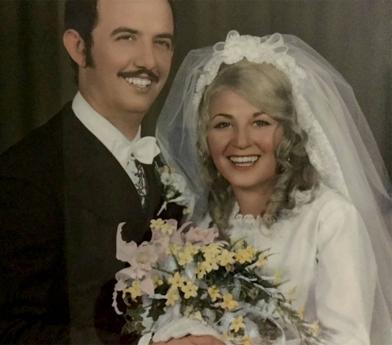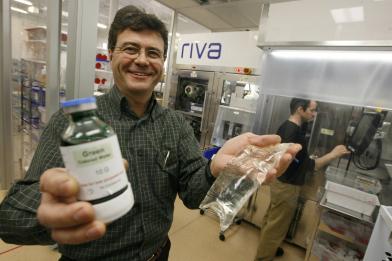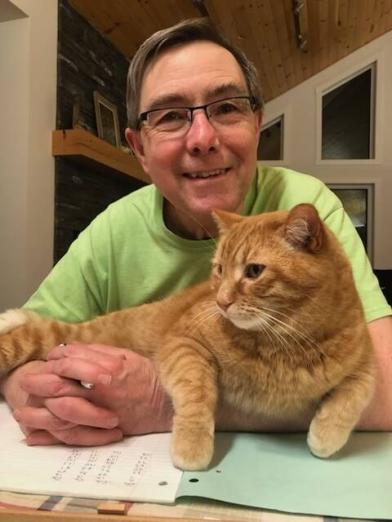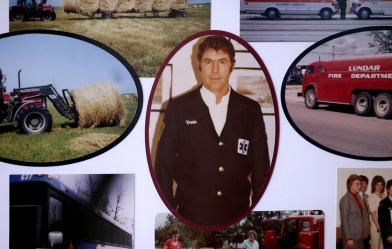A Life's Story
August 26, 2023
Keen eye, people skills built photojournalism career
Gerry Cairns, 90, was longtime Free Press staffer, editor
By: Ben Waldman
When Gerry Cairns joined the Free Press staff as a photographer in 1952, he didn’t have much use for a camera.
For nine months, the 19-year-old’s assignment was to quietly observe as he rode along with the newspaper’s crack squad of daily shooters. Photo editor Jack Ablett gave Cairns strict orders not to take a picture during his idle apprenticeship.
It was his job to watch and learn.

Supplied
Gerry Cairns
Once he started, Cairns, who died in June at 90, never stopped shooting. He stayed at the newspaper for more than 40 years, including stints as chief photographer and photo editor during the 1980s.
His colleagues considered him a champion of photojournalism and his career served as a bridge between two distinct islands in the profession’s history. His first shift was marked by negatives swimming in the chemical bath of the darkroom; his final one was at the dawn of the digital era as the internet quickly rapped on the newsroom door.
Cairns had no formal training in photography. Growing up in Holmfield and Killarney, one of four children in a household run by a single mother, he headed to Winnipeg at 18, and took a job as a copy boy at the Free Press. His salary was $120 per month, plus a $40 bonus for living expenses.
After operating the engraving the teletype machines, he received an intriguing offer from the photo editor to join the staff, says Lorraine, who was married to Cairns for 65 years.
Eager for stability, Cairns agreed.
Soon, he was lugging around a 4×5-inch large-format camera, light meters, and heavy batteries, rushing off to assignments in the small hours, as he trained his eye to spot moments of stillness amid the eternal motion of daily life in Winnipeg.
He got the same types of assignments doled out today, ranging from political galas to burning buildings to train derailments. However, he was seeking the perfect shot with little room for error — as few as eight chances at a winning shot — and without the benefit of a digital display.
In Cairns’s era, photographers returned to the newsroom to process, wash and dry their own negatives in the staff darkroom.

Supplied
Cairns, considered a champion of photojournalism, excelled at nature and landscape shots.
“The whole photographic process was a minefield,” says Ken Gigliotti, who joined the Free Press staff during Cairns’s tenure as photo editor and stayed at the paper until 2016. “It was a long process, and at every step, there was a chance to screw up.”
It was under those conditions Cairns developed his skillset, which came in handy as the newspaper transitioned to a six-panel format in 1977.
With that shift came the potential for a greater emphasis on the value of visual journalism, something for which Cairns had long advocated. He believed photographs were more than decoration; they were an integral part of journalistic storytelling.
Finally, there was space for the pictures to tell the story, and over the next decade, Cairns found himself at the helm of one of the country’s most highly regarded photography staffs. Always in a natty suit and tie, Cairns led a talented team including James Haggerty, Phil Hossack, Jane Romaniuk and Wayne Glowacki.
“When I became a photographer, I was often asked if I knew Gerry Cairns,” says Glowacki, who retired in 2017, after 43 years with the Free Press. “He was a local celebrity, of sorts.”
His skills as a photographer, Glowacki and Gigliotti say, were as much a result of a keen eye as they were the result of tremendous people skills. He had a knack for making his subjects feel at ease.
NDP politician Ed Schreyer once was photographed by Cairns with his feet up on his desk, giving him an air of approachability and ease. (In private, Schreyer said the photo helped earn him a spot in the Manitoba premier’s office, Lorraine says.)
If Cairns had his camera on hand, he was comfortable, and always a good sport. When knocked over by a 250-pound lineman during a Winnipeg Blue Bombers game, Cairns splatted into a sideline snowbank. As he stood back up, the crowd cheered; Cairns couldn’t help but chuckle.

GERRY CAIRNS / WINNIPEG FREE PRESS
Cairns spotted asked a girl in a white dress to pose with the gladiolas at a downtown Winnipeg garden show in 1955. By the next weekend, they were a couple, and, by 1957, he and Lorraine were married.
There was less room for laughter when members of the Royal Family were in town. The arrivals of dignitaries such as Princess Patricia or the Queen Mother were serious business. To mark the occasions, Cairns instructed his staff to dress as he did to abide by the royal dress code.
An editor commented on how nicely the photo staff looked, leading the company to consider making the suit and tie mandatory, even when the royals left.
“Gerry must have felt a little guilty,” Gigliotti recalls, because Cairns went into “protest mode.” He bought each photographer a green sports coat made from terry cloth — the ugliest jackets the staff had ever seen. The idea for a formal dress code was abandoned.
In 1977, Cairns was invited to London to present a book of photographs he’d taken of the Royal Family to the Queen Mother. On the day he was to meet her, Cairns toured the city in jeans and a T-shirt, and insisted on getting spruced up for his meeting. By the time he was ready, the Queen Mother was off to her afternoon appointment, so Cairns presented the book to her secretary.
Cairns took thousands of photographs during his career, excelling at nature and landscape shots and snapping images of five prime ministers, including Pierre Trudeau and Lester B. Pearson. But the most consequential picture Cairns ever took came while covering a downtown Winnipeg garden show in 1955.
The flowers were pretty, but Cairns knew he needed a face to match, so he headed to the Free Press lobby to find a model.
He spotted a girl in a white dress and asked her to pose with the gladiolas. By the next weekend, they were a couple, and, by 1957, he and Lorraine were married.
The couple spent much of their time at their cottage in Nutimik Lake, watching the Winnipeg Symphony Orchestra, and travelling the world after Cairns’s retirement in 1993.

Supplied
Longtime Free Press photographer Gerry Cairns had ‘a knack for making his subjects feel at ease.’ Gerry, who worked at the newspaper for 40 years, died in June at the age of 90.
As he got older, Cairns continued to take photographs, even after macular degeneration robbed him of his eyesight. In his mid-eighties, Lorraine taught Cairns how to use the digital assistant Siri to take pictures. “They all turned out pretty well,” she says.
To the end of his life, Cairns was a daily consumer of the Free Press.
“He would listen to it every morning,” says Lorraine. Even though he couldn’t see what was written or which images made the cut, he still held the paper in his hands as the audio rolled on.
“He needed to hold that paper.”
ben.waldman@winnipegfreepress.com
A Life's Story
December 13, 2025
Born to be wildly enthusiastic
Full-hearted family man, actor, photographer, teacher, motorcyclist lived life at full throttle
View MoreA Life's Story
December 06, 2025
A winning hand
Devoted matriarch made most of cards she was dealt
View MoreA Life's Story
November 29, 2025
She made life better for others
Accomplished artist, musician and entrepreneur who designed clothes for breast cancer patients always put others before herself
View More







